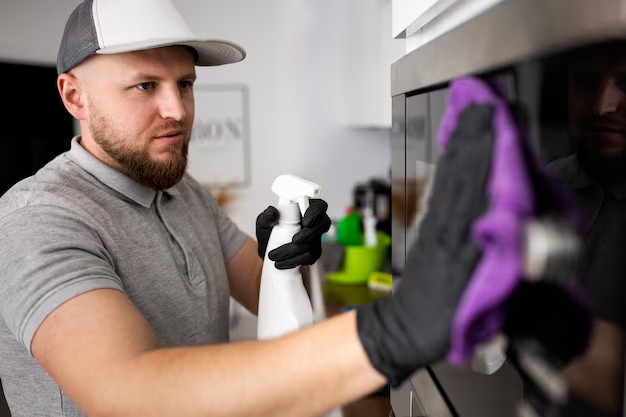Why Is My Refrigerator Leaking Water? Understanding the Causes and Solutions
Walking into your kitchen to find a puddle beneath your refrigerator can be a baffling and frustrating experience. Yet, this is a common issue that many householders face. Why do refrigerators leak water, and what can you do about it? This guide will explore the most common reasons behind this annoying problem and provide practical solutions that can help you keep your kitchen dry and your fridge running smoothly.
Common Causes of Refrigerator Water Leaks
Let's delve into the most frequent causes that lead to a leaky refrigerator and how you might identify them.
🔹 Blocked Defrost Drain
A blocked defrost drain is a typical culprit when your refrigerator starts to leak. Over time, food particles or debris may clog the drain hose, leading to water backup and eventually dripping out of the fridge.
Identifying the Issue:
- Water pooling at the bottom of the fridge or freezer.
- Ice buildup on the base of the freezer.
Solution: To remedy this, you need to unclog the drain. This often involves flushing warm water through the drain to melt any ice or push debris through.
🔹 Malfunctioning Water Supply Line
Refrigerators with water dispensers or ice makers have a water supply line that connects them to the house's plumbing. If this line develops a leak or becomes damaged, water can seep onto the floor.
Signs of Trouble:
- Water pooling primarily at the back of the refrigerator.
- Visible drips or streams from the pipe.
Solution: Check the water supply line for cracks or breaks and replace it if damaged. Ensure all connections are secure to prevent future leakage.
🔹 Faulty Door Seals
If your refrigerator door seals are worn or damaged, warm air can enter, causing excess condensation that may lead to water leakage.
Symptoms Include:
- Condensation on the outside of the fridge.
- Difficulty keeping the fridge door closed.
Solution: Inspect the seals for wear and tear, and consider replacing them if they're no longer functional. This can enhance energy efficiency as well.
Other Potential Causes and Solutions
While the above are the most common issues, other less frequent causes might be at play, and they are worth considering.
🔹 Cracked Drain Pan
The drain pan collects the water that results from the defrost cycle, which then evaporates. If it cracks, water may spill onto the floor.
Diagnosis Tips:
- You might see water seeping from underneath the fridge.
- The pan seems insecure or visibly broken.
Solution: Replacing the drain pan is typically a straightforward fix, and checking for proper alignment can often solve the problem.
🔹 Ice Maker Leaks
If the ice maker's fill tube is not correctly aligned or the ice maker itself is malfunctioning, it can result in water leakage either inside the freezer or the floor.
Indicators:
- Water pooling inside the freezer.
- An unusually wet ice dispenser chute.
Solution: Ensure that the fill tube is properly positioned and check the ice maker for any leaking parts that might need repair.
Preventative Tips to Avoid Refrigerator Leaks
While fixing leaks is often possible, preventing them is a much more efficient approach. Here are some preventative measures you can implement:
Regular Cleaning and Maintenance
- Clean the Defrost Drain: Regularly flush it with warm water to prevent clogs.
- Inspect Water Lines: Check for any signs of wear and replace as needed.
- Examine Door Seals: Clean and inspect seals periodically and make adjustments to ensure snug fitting.
Mindful Usage
- Avoid Overstuffing: Overloading the fridge can impede air circulation, leading to condensation.
- Even Distribution: Place heavier items at the bottom and lighter ones on top to maintain balance and optimal seal conditions.
Installation Environment
- Ensure Proper Placement: Make sure your refrigerator is level—not tilted—to avoid water pooling in one area inside the appliance.
- Optimal Ventilation: Ensure there’s sufficient space around the fridge to facilitate proper air circulation.
Summary of Key Takeaways
Here’s a quick summary to help you recall the primary insights from this guide:
- Blocked Drain: Clean to avoid water pooling from inside.
- Water Supply Line: Inspect and replace if leaking.
- Door Seals: Check for damage to reduce condensation.
- Drain Pan: Replace if cracked or misaligned.
- Ice Maker: Ensure proper alignment and check for leaks.
🛠️ Preventive Tips:
- Regular maintenance and cleaning of the refrigerator.
- Routine checking of seals and water lines.
- Avoid overstuffing to maintain efficient air circulation.
By addressing the underlying issues and maintaining regular upkeep, you can significantly reduce the likelihood of leaks. Remember that while some fixes are straightforward DIY jobs, complex issues may sometimes require professional assistance to ensure that your refrigerator remains operational and free from leaks.
Understanding the various causes of refrigerator leaks equips you with the knowledge to effectively troubleshoot and resolve issues before they escalate, keeping your kitchen dry and appliances functioning efficiently.
